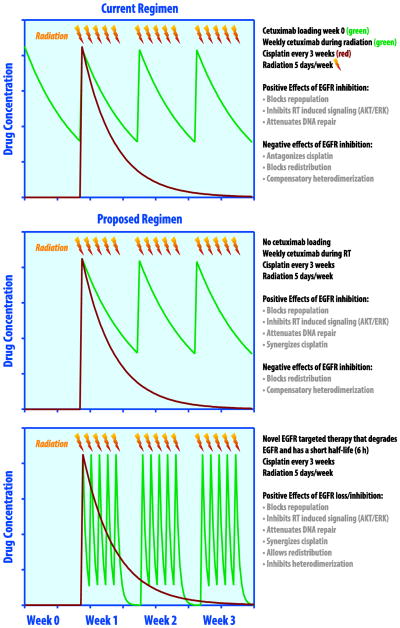Figure 1.
Scheduling of EGFR targeted therapies with chemoradiation. EGFR inhibitors interact with radiation therapy through attenuation of DNA repair, inhibition of radiation induced pro-survival signaling pathways such as PI3k/AKT and MAPK/ERK, and by blocking tumor repopulation in between radiation fractions (Nyati et al., 2006, Chen et al., 2007, Huang et al., 2000). Top panel, treatment schedule used in RTOG 0522 (Ang et al., 2014). Shown are the concentrations of cetuximab (green) and cisplatin (red) as a function of time over the first 4 weeks of treatment. The loading dose of cetuximab theoretically antagonizes the effect of cisplatin (Morelli et al., 2005) and the long half-life of cetuximab potentially blocks redistribution of tumor cells to a more radiosensitive phase of the cell cycle (Peng et al., 1996, Di Gennaro et al., 2003). Additionally, compensatory heterodimerization of EGFR with another tyrosine kinase (e.g. c-Met, her2) can occur. Middle panel, by eliminating the loading dose of cetuximab the antagonistic effect of EGFR inhibition preceding cisplatin is mitigated. Bottom panel, by using a novel EGFR targeted agent that degrades rather than inhibits EGFR with a short half-life (6 hours) dosed daily after radiation, the negative effects of EGFR inhibition on cell cycle distribution can further be diminished while preserving the beneficial effects of these drugs.

